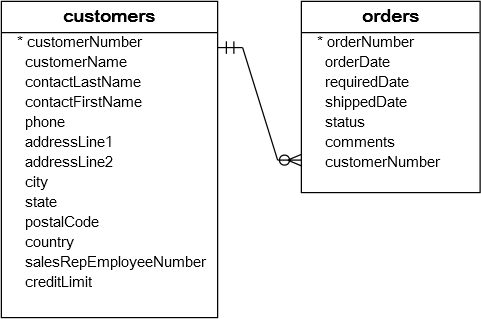A FOREIGN KEY is a key used to link two tables together. The table containing the foreign key is called the child table , and the table containing the candidate key is called the referenced or parent table. Summary: in this tutorial, you will learn about MySQL foreign key and how to create, drop, and disable a foreign key constraint. Introduction to MySQL foreign key.
MySQL supports foreign keys, which let you cross-reference related data across tables, and foreign key constraints, which help keep this spread-out data consistent. The essential syntax for a foreign key constraint definition in a CREATE TABLE or ALTER TABLE statement looks like this:. In MySQL , InnoDB tables support checking of foreign key constraints. See The InnoDB Storage Engine, and Foreign Key Differences. For storage engines other than InnoDB, it is possible when defining a column to use a REFERENCES tbl_name(col_name) clause, which has no actual effect, and serves only as a memo or comment to you.
Using MySQL Workbench you may add a foreign key from within the table editor or by using the relationship tools on the vertical toolbar of an EER Diagram. A foreign key constraint is not required merely to join two tables. This section deals with adding a foreign key using the foreign key tools. To add a foreign key using the table editor, see Section 8. Luckily, MySQL supports LAST_INSERT_ID() exactly for this purpose.

MySQL Creating tables with Foreign Keys giving. How to truncate a foreign key constrained. Add Foreign Key to existing table - Stack. Below we will show some simple examples of how to set up foreign keys and how they work in MySQL.
In our examples, we will reference the parent and child tables below. The tables labelled “Customer” and “Contact” represent the parent and child tables, respectively. Let’s visit this passage from section 13. The ALTER TABLE statement conflicted with the FOREIGN KEY constraint “adresy_klient_fk”. The conflict occurred in database “zajecia”, table “dbo.
Aby poradzić sobie z taką sytuacją mamy dwa wyjścia. Możemy stwierdzić że nie jesteśmy wstanie naprawić bałaganu, ale nie chcemy go też. Is there something I can do to work around this DROP TABLE foreign keys. What’s the use of Foreign key constraint in a MySql.
In this tutorial, You’ll learn about Foreign key constraint and it’s advantages. What is Foreign Key in MySql. In simple words, A Foreign key is a reference to a primary key in another table. You need to drop the key first. As per mysql documentation, TRUNCATE cannot be used on tables with foreign key relationships.
There is no complete alternative AFAIK. Dropping the contraint still does not invoke the ON DELETE and ON UPDATE. Stack Exchange network consists of 1QA communities including Stack Overflow, the largest, most trusted online community for developers to learn, share their knowledge, and build their careers. The foreign key must reference the? Adding a foreign key to a table creates a? When to Use the MySQL Foreign Key Constraint.
You create a foreign key constraint to maintain referential integrity. By creating a foreign key constraint, you are telling MySQL to enforce certain rules over the data. When data is inserte deleted or update MySQL will check that it.
A quick MySQL foreign key tutorial, with real-world examples from an application I just wrote. Shows how to create a foreign key in a create table statement, and how to use the ON DELETE and ON UPDATE actions. Identity is used to make a column Auto Increment. But as a result, you can insert data that violate foreign key constraints, and when you enable the referential constraints (set FOREIGN _ KEY _CHECKS to 1), MySQL does not re-validate the inserted rows.
As an alternative, you can firstly create tables without foreign key constraints, load data and then create foreign keys using ALTER TABLE statements. The FOREIGN KEY constraint is a key used to link two tables together.
Brak komentarzy:
Prześlij komentarz
Uwaga: tylko uczestnik tego bloga może przesyłać komentarze.